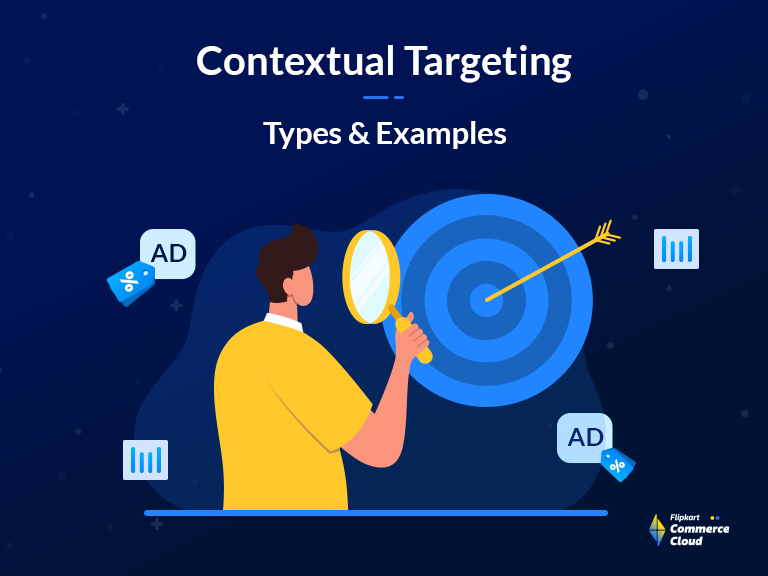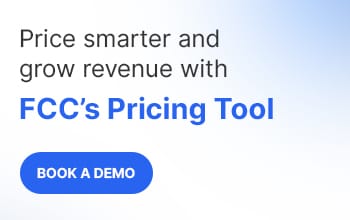This article showcases 6 brilliant examples of contextual advertising to ad efficiency and drive engagement
Over 50% of marketers recognize contextual ads’ value as an alternative to cookie-based targeting. With consumers feeling overwhelmed and annoyed by irrelevant and intrusive ads, contextual advertising provides a more seamless and subtle approach. As privacy concerns continue to grow, retailers find that aligning their messages with relevant content can combat ad fatigue and improve user experience.
This article will showcase 6 successful examples of contextual advertising demonstrating the power of establishing a natural connection with consumers and driving effective engagement.
Understanding the Concept of Contextual Advertising
A form of targeted advertising, context-based advertising considers the keywords and content on a web page when displaying ads instead of relying on past user behavior. For example, if someone is reading an article about cleaning tips, they may see ads for cleaning products on the same page. This approach allows publishers to create effective marketing strategies by focusing on the relevance of the environment rather than collecting personal data for targeted ads.
Contextual advertising is a strategic approach targeting specific audiences based on their interests. An example of this can be seen in the above ad for “Sun Valley,” a mountain resort known for winter sports, on a webpage discussing snow sports. The ad invites viewers to “Experience Mountain Magic,” aligns perfectly with the website’s theme and appeals to readers interested in activities like skiing and snowboarding.

This targeted placement and contextual marketing content increase the chances of engagement from the relevant audience, making it an effective form of advertising.
How does contextual advertising differ from behavioral advertising?
Contextual advertising and behavioral advertising are two different approaches to targeting ads. Contextual advertising focuses on the content of a webpage and displays relevant ads based on keywords and the site’s context. On the other hand, behavioral targeting uses information about a user’s browsing history, preferences, and online behavior to create a personalized ad experience.
The main difference is – contextual advertising prioritizes content relevance while behavioral advertising prioritizes user-specific targeting based on collected data over time.
How does contextual advertising differ from programmatic advertising?
Contextual advertising is a targeted advertising method that focuses on the web page’s content where the ad is displayed. Instead of tracking third-party cookie or relying on user data, it scans the page’s content, keywords, and metadata to determine the most relevant ads to display. This makes it less intrusive in terms of privacy.
On the other hand, Programmatic Advertising uses algorithms and real-time bidding to buy and place ads across a network of websites. It targets ads based on user behavior, preferences, and demographics gathered from their online activity. While this approach can be more effective in certain contexts, it relies heavily on collecting and analyzing user data, which may raise greater privacy concerns for some individuals.
No doubt, contextual targeting is gaining popularity among retailers due to rising privacy concerns and third-party cookie challenges.
6 Examples of contextual advertising everyone should know
Here are 6 contextual advertising examples that can help you create engaging ads.
Contextual ads example 1: E-commerce sites like Flipkart
E-commerce sites use innovative approaches to monetize user traffic and provide increased visibility for their partner brands. An example of this is the Product Contextual Ads (PCAs) , a unique ad capability provided by FCC, which are based on a user’s buying intent to make them more relevant and effective. Flipkart Commerce Cloud employs advanced algorithms that analyze keyword search data and content from web pages engaged with by users. This cookieless targeting approach minimizes exposure to user data while still delivering highly targeted ads.
Tips for retailers:
- Leverage user search and interaction data to identify purchasing intent – a strong indicator of user interest.
- Invest in advanced retail media platform technologies to analyze keyword search data and user-engaged content for more precise ad targeting without relying on cookies.
- Ensure that ads align with the products or content users are currently viewing for higher engagement and conversion rates.
- Display ads at the right moment in the user’s shopping journey – when exploring a specific product category or similar items.
- Continuously evaluate contextual ad performance to refine placements and maintain relevance over time.
Contextual ads example 2: Based on location
Contextual advertising based on location is a highly targeted and effective approach to reaching the right audience. Advertisers can pinpoint a user’s specific geographic location by using GPS, IP addresses, or other location data. These contextual signals help in tailoring ads to match local culture, events and offers that are relevant to that area. These ads are delivered in real-time, taking advantage of the user’s immediate context for maximum impact.
Effective contextual advertising considers factors like location and time zone to deliver relevant and timely ads. For example, a cooking app ad may be more useful at midday when people are thinking about dinner plans. This approach prioritizes helpful ads based on the typical daily routines of most people.
The Burger King ‘Whopper Detour’ campaign is a prime example of successful geo-targeted contextual advertising. Innovatively leveraging location-based marketing, the campaign strategically targeted those within 600 feet of a McDonald’s location. By setting up a geo-fence around competing restaurants, Burger King could identify and connect with potential customers who were nearby. The ad was triggered by the customer’s proximity to McDonald’s and offered contextually relevant content, appealing to individuals who were likely already considering fast food purchases.
Tips for retailers:
- Use geo-targeting tools to display ads relevant to the user’s location. This can be especially effective for promoting offers or products specific to certain areas.
- Create unique offers for different locations, such as a discount that coincides with a local holiday or event.
- Tailor your ads to align with local cultural norms and preferences, such as language, traditional attire, and local celebrities.
- Take advantage of local events and holidays by advertising related products leading up to them.
Contextual ads example 3: In-app store
Contextual advertising within app stores is an effective strategy for connecting users with relevant app recommendations based on their current app usage or interests. For example, for a person who regularly uses a fitness app can be recommended a healthy recipe app. Promoting complementary practices in the same category of health and fitness enhances the user’s experience and encourages a holistic approach to wellness.
The key to successful in-app contextual advertising format is providing personalized recommendations that align with the user’s current activity increasing the likelihood of engagement.
Tips for retailers:
- Choose an advanced advertising platform with sophisticated recommendation engine capabilities. To suggest complementary products based on customer current interests, boosting the potential for cross-selling.
- Segment customers according to their shopping behaviors to deliver more targeted advertisements.
- Identify crucial stages in the customer journey where additional purchases are likely and strategically position recommendations at these junctures.
- Use real-time data to continuously update suggestions in line with trending items, seasonal promotions, or new stock.
- Experiment with different ads and placements to identify the most effective approach for your audience.
Contextual ads example 4: Video streaming sites like YouTube
Contextual advertising on video streaming sites, such as YouTube, utilizes ad placement aligned with the content of the videos being watched. The objective is to display ads that complement or directly relate to the viewer watching, increasing their chances of finding the ad engaging and relevant.

In this example, Telus’s pre-roll YouTube ad appears before a review of the Samsung Galaxy Note 10+ smartphone, targeting a highly relevant audience of tech enthusiasts and potential buyers. By placing their ad at this specific moment, when viewers are actively thinking about mobile technology and potential purchases, Telus can capture their attention and promote their video streaming package.
Tips for retailers:
- Strategically place ads on videos that evaluate or discuss products similar to your own or that resonate with the preferences of their target audience. For instance, a retailer specializing in phone cases could tailor ads to smartphone review videos, positioning their products as essential add-ons.
- If a user has previously expressed interest in a particular product category, retarget those users with ads on the most relevant content of those pages.
- Prompt immediate action from viewers by incorporating high-converting CTAs in the ads, such as ‘Limited-time-offer’ ‘Last-few-left’ and ‘Buy-now’
- Continuously track the effectiveness of video ads and optimize them based on which content generates the highest engagement and conversions.
Contextual ads example 5: Social media ads
Contextual advertisements on social media platforms are about showing the right message to the right person at the right time. By utilizing contextual data on a user’s interests, and engagement with content, ads can be targeted toward them in their feed. With strategically scheduled ads and targeting specific users based on their engagement with related content or pages, social media advertising can effectively reach potential customers.
Tips for retailers
- Gain deep insights into the audience through analysis of their social media interactions.
- Create ad designs seamlessly integrated into users’ feeds, capturing their attention and aligning with their preferences.
- Employ A/B testing to identify top-performing ads and fine-tune targeting strategies for maximum impact.
- Deploy compelling calls to action like Discover More or Explore Now to prompt user interaction with the ad.
- Offer enticing benefits such as exclusive deals or enriching ad content to elevate engagement rates.
Contextual ads example 6: Device-specific targeting
This is an upgraded version of contextual advertising that tailors ads based on the specific characteristics and capabilities of the user’s device. By utilizing technology to gather information about a user’s device, such as storage space, hardware version, and preferred language settings, advertisers can ensure that their advertisements reach an audience who can actually use their products or services. This not only improves the overall user experience by providing relevant ads, but also reduces the likelihood of frustrating experiences like incompatible downloads.
As the digital world evolves with a growing emphasis on privacy, the above examples of contextual advertising showcase the flexibility of contextual advertising and its ability to connect with consumers without relying on personal data.
Harnessing the Power of Contextual Advertising with Flipkart Commerce Cloud (FCC)
Flipkart Commerce Cloud’s Ads Manager is a powerful tool for businesses looking to maximize their contextual ads and connect with consumers on a deeper level. One of its key features is the ability to deliver dynamic ads that are well-suited for the context and adaptable in real-time. By utilizing environmental cues and current events, FCC ensures that these ads are timely and relevant. With the help of advanced technology, businesses can create impactful ad experiences that drive engagement and conversion, making Flipkart Commerce Cloud an invaluable asset for any company’s advertising efforts.
FCC’s advanced analytics allows for a deeper understanding of your audience without violating their privacy. Use this information to create tailored ads that resonate with the content they consume, leading to higher engagement. With FCC’s ability to adapt ads in real-time, you can stay relevant by utilizing current trends and events. Continuously measure the performance of your ads and use insights to optimize for better outcomes.
Want to know more about how FCC can help you with retail media platform advertising? Book a free consultation with our retail media platform experts!






